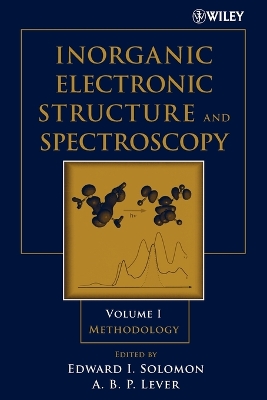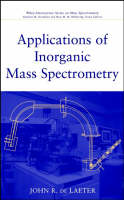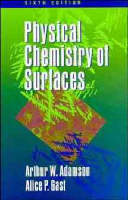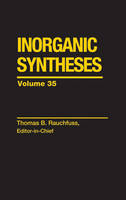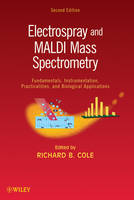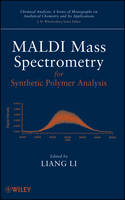Principles and Applications of Ion Scattering Spectrometry
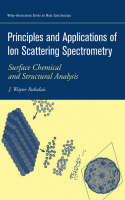 -15%
portes grátis
-15%
portes grátis
Principles and Applications of Ion Scattering Spectrometry
Surface Chemical and Structural Analysis
Rabalais, J. Wayne
John Wiley & Sons Inc
10/2002
344
Dura
Inglês
9780471202776
15 a 20 dias
622
Preface.
1. Introduction.
1.1. Ion Scattering Spectrometry.
1.2. Importance of Surfaces.
1.3. Survey of Ion-Surface Interactions.
1.4. Historical Development of Ion Scattering Spectrometry.
1.5. Other Types of Ion Spectrometeries.
1.6. Features of Ion Scattering Spectra.
2. Theoretical Description of Atomic Collisions.
2.1. Kinematics of Atomic Collisions.
2.2. Dynamics of Atomic Collisions.
2.3. Multiple Collisions.
Appendix 2.1. Generalized Deflection Function.
3. Experimental Methods.
3.1 General Description of an Ion Scattering Spectrometer System.
3.2. Time-of-Flight Scattering and Recoiling Spectrometer.
3.3. Coaxial Scattering Spectrometer.
3.4. Scattering and Recoiling Imaging Spectrometer.
3.5. Mass and Charge Selection of Pulsed Ion Beams Using Sequential Deflection Pulses.
3.6. Ion Scattering and Recoiling from Liquid Surfaces.
4. General Features of Ion Scattering and Recoiling Spectra.
4.1. Energy Spectra.
4.2. Time-of-Flight Spectra.
4.3. Recoiling Spectra without Scattering Spectra.
4.4. Sampling Depth.
4.5. Attributes of the Ion Scattering Technique.
4.6. Comparison to Other Surface Elemental Analysis Techniques.
5. Structural Analysis from Time-of-Flight Scattering and Recoiling Spectrometry.
5.1. Atomic Collisions in the keV Range.
5.2. Structure Analysis.
5.3. Azimuthal Alignment of the Incident Ion Beam.
5.4. TOF-SARS and LEED.
6. Real-Space Surface Crystallography from Scattering and Recoiling Imaging Spectrometry.
6.1. An Imaging Spectrometry from Nature's Own Atomic Lenses.
6.2. Shadowing and Blocking.
6.3. Azimuthal Equidistant Mapping and Projection of SARIgrams.
6.4. Simulated and Experimental SARIgrams.
6.5. Termination Layer of CdS(0001).
6.6. Chemisorption Site of Chlorine on Ni(110).
6.7. Quantitative Analysis of the Pt(111) Surface.
6.8. Direct Detection of Hydrogen Atoms on Pt(111).
6.9. Interpretation of SARIgrams.
6.10. Quantitative Analysis of SARIS Images.
6.11. Advantages of SARIS.
7. Applications of TOF-SARS and SARIS to Surface Structure Analysis.
7.1. Clean Surfaces: Reconstruction and Relaxation.
7.2. Hydrogen on Surfaces.
7.3. Oxygen on Surfaces.
7.4. Metal Oxide Surfaces.
7.5. Organic Molecules on Surfaces.
7.6. Semiconductor Surfaces.
7.7. Epilayers on Nickel.
8. Ion-Surface Charge Exchange and Inelastic Energy Losses.
8.1. Charge Exchange Processes and Interactions.
8.2. Examples of Experimental Studies-Charge Exchange Phenomena.
8.3. Theoretical Methods.
9. Hyperthermal Reactive Ion Scattering for Molecular Analysis on Surfaces.
9.1. Introduction.
9.2. Characteristic Features of Hyperthermal Ion-Surface Collisions.
9.3. Reactive Ion Scattering of Hyperthermal Cs+ Beams.
9.4. Application of the Cs+ RIS Technique.
9.5. Summary.
10. Bibliography of Ion Scattering Publications.
Index.
Preface.
1. Introduction.
1.1. Ion Scattering Spectrometry.
1.2. Importance of Surfaces.
1.3. Survey of Ion-Surface Interactions.
1.4. Historical Development of Ion Scattering Spectrometry.
1.5. Other Types of Ion Spectrometeries.
1.6. Features of Ion Scattering Spectra.
2. Theoretical Description of Atomic Collisions.
2.1. Kinematics of Atomic Collisions.
2.2. Dynamics of Atomic Collisions.
2.3. Multiple Collisions.
Appendix 2.1. Generalized Deflection Function.
3. Experimental Methods.
3.1 General Description of an Ion Scattering Spectrometer System.
3.2. Time-of-Flight Scattering and Recoiling Spectrometer.
3.3. Coaxial Scattering Spectrometer.
3.4. Scattering and Recoiling Imaging Spectrometer.
3.5. Mass and Charge Selection of Pulsed Ion Beams Using Sequential Deflection Pulses.
3.6. Ion Scattering and Recoiling from Liquid Surfaces.
4. General Features of Ion Scattering and Recoiling Spectra.
4.1. Energy Spectra.
4.2. Time-of-Flight Spectra.
4.3. Recoiling Spectra without Scattering Spectra.
4.4. Sampling Depth.
4.5. Attributes of the Ion Scattering Technique.
4.6. Comparison to Other Surface Elemental Analysis Techniques.
5. Structural Analysis from Time-of-Flight Scattering and Recoiling Spectrometry.
5.1. Atomic Collisions in the keV Range.
5.2. Structure Analysis.
5.3. Azimuthal Alignment of the Incident Ion Beam.
5.4. TOF-SARS and LEED.
6. Real-Space Surface Crystallography from Scattering and Recoiling Imaging Spectrometry.
6.1. An Imaging Spectrometry from Nature's Own Atomic Lenses.
6.2. Shadowing and Blocking.
6.3. Azimuthal Equidistant Mapping and Projection of SARIgrams.
6.4. Simulated and Experimental SARIgrams.
6.5. Termination Layer of CdS(0001).
6.6. Chemisorption Site of Chlorine on Ni(110).
6.7. Quantitative Analysis of the Pt(111) Surface.
6.8. Direct Detection of Hydrogen Atoms on Pt(111).
6.9. Interpretation of SARIgrams.
6.10. Quantitative Analysis of SARIS Images.
6.11. Advantages of SARIS.
7. Applications of TOF-SARS and SARIS to Surface Structure Analysis.
7.1. Clean Surfaces: Reconstruction and Relaxation.
7.2. Hydrogen on Surfaces.
7.3. Oxygen on Surfaces.
7.4. Metal Oxide Surfaces.
7.5. Organic Molecules on Surfaces.
7.6. Semiconductor Surfaces.
7.7. Epilayers on Nickel.
8. Ion-Surface Charge Exchange and Inelastic Energy Losses.
8.1. Charge Exchange Processes and Interactions.
8.2. Examples of Experimental Studies-Charge Exchange Phenomena.
8.3. Theoretical Methods.
9. Hyperthermal Reactive Ion Scattering for Molecular Analysis on Surfaces.
9.1. Introduction.
9.2. Characteristic Features of Hyperthermal Ion-Surface Collisions.
9.3. Reactive Ion Scattering of Hyperthermal Cs+ Beams.
9.4. Application of the Cs+ RIS Technique.
9.5. Summary.
10. Bibliography of Ion Scattering Publications.
Index.



